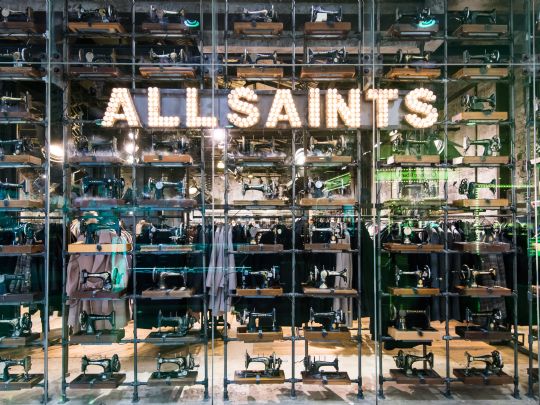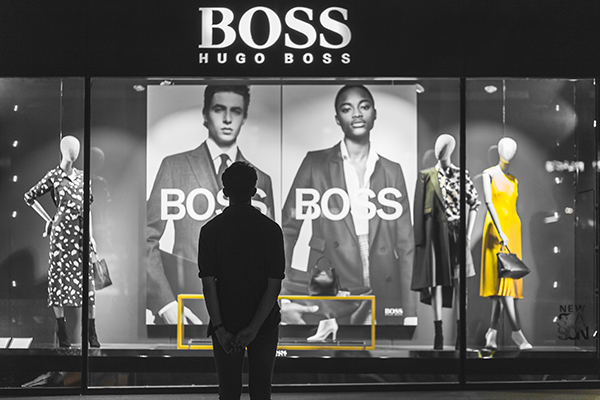The challenge of merchandise planning is nearly as old as retail itself. How to ensure the right amount of stock is in the right place at the right time is a key tenet of successful retailing. But the dawn of multi-channel retailing has increased complexity, whilst offering consumers more choice than ever. Where one online store may disappoint, its rival may not. The message from industry experts is clear: retailers ignore multi-channel merchandise planning at their peril.
It’s fair to say that merchandise planning is a bit of a nebulous term. It can mean different things to different retailers operating in different sectors. “Merchandising planning comes in different guises; 'one size' does not fit all,” says Charlotte Kula-Przezwanski, global enterprise practice lead at IT solutions provider MICROS.
“Terminology can be different across sectors and the main differences occur depending on whether you are a retailer that develops own-brand products or ranges bought-in branded products. Grocery is also run very differently to other product sectors, due to volumes and shelf lives. In a nutshell, merchandise planning is all about having the right product, in the right place, at the right time and right price – and also right size if this is pertinent,” explains Kula-Przezwanski.
Greg Wilson, VP of field strategy at Quantum Retail, a provider of inventory optimisation and supply chain management software and solutions, agrees that there are commonalities between the challenges faced by traditional retailers and those operating in an omni-channel environment. “There are some new challenges but a lot of the challenges are actually the same, which is predicting what demand is going to be in different locations.”
Accurate forecasting tools are not the single most important part of merchandise planning, says Wilson. “Conventional wisdom says the way you solve all of these problems is with the perfect forecast,” he says. “The problem is the perfect forecast doesn’t exist, and as much as we’d like to believe it will, I don’t expect to see the perfect forecast in my lifetime.”
The shift to a multi-channel retailing model has certainly made the task of forecasting a far taller one. “If you step back and look at a high-level conceptually it’s basic retailing: you put the inventory where the customer wants it, when they want it. It’s just that when the customer wants it, where the customer wants it, and how they’re asking for it have changed dramatically,” says Wilson.
“We need to evolve with that, to understand how that’s happening so we can get the inventory in place. Answering that question has undoubtedly become much more complex than it was a decade ago.”
But getting the stock to the right place is just one challenge – managing inventory thereafter is another entirely. Keeping pace with demand can be tricky, especially in the fast-moving fashion and apparel sector. It’s a tricky balance, says Wilson. “Fashion product lives a very short time so it’s difficult to get a read on how a particular item is actually being received by shoppers and be able to react to that.” For a fashion retailer, Wilson says, selling out of a particular item may not be a total disaster. “In some examples, it might be ok to be out of stock on high fashion items as that can lead to a short-term hype.”
Yet, too quickly such hype can turn sour if retailers don’t play their cards right, warns Lee Gill, VP of retail strategy at supply chain management specialists JDA. “ Look at Heston Blumenthal’s Christmas cake which generated a lot of publicity but you couldn’t buy it for love nor money.” And disappointed customers will often take to social media to air their grievances, he adds.
“Those sorts of failures in today’s world are going to be broadcast in a nanosecond to not just ten people but to ten thousand people through social media. There is a pressure today and tomorrow on making sure your key metrics are solid. You’ve got to do that or you’re going to have it broadcast all over the place.”
Once the forecasting and inventory planning parts of the puzzle are in place, the onus is on retailers to leverage technology to optimise that stock, said Andy Lloyd, general manager, commerce products at NetSuite. This can take various forms, from altering the way in which a product is displayed on the website to encourage sale of an underperforming colour or model, to transforming the logistics and delivery model.
“In the internet age, consumers are smart and they have a lot more power – they can very quickly find the product on another retailer’s site and compare the prices of all the retailers who are selling that product,” he explains. This means that retailers must differentiate themselves on service. One of the ways in which they can do this, argues Lloyd, is to emulate the Amazon model of creating localised hubs in order to reduce shipping time and costs.
For multi-channel retailers, they already have these centralised hubs – the brick and mortar stores. By distributing stock from these outlets, they are able to improve stock optimisation as well as reducing wait time for the customer. This undoubtedly delivers huge benefits for the customer as well as the retailer, says Lloyd. “Anything you can do where you’re still able to satisfy customer demand, while carrying less inventory is a competitive advantage.”
“Using better demand planning to improve customer experience is probably the biggest opportunity we see nowadays.”
Through the eyes of the supplier
Magmatic took the children’s market by storm when it unveiled its bestselling kids’ ride-on suitcase, the trunki. Staying on top of demand is absolutely vital for the success of the business, says operations director Phil Bagnall.
“We’ve got our own e-commerce site where we sell direct to customers, but 90% of our business is done through standard retail channels including Argos, Amazon, Sainsbury’s, John Lewis,” he says.
This means that one of Bagnall’s biggest challenges is keeping up with those retailers’ strategy, on-demand and inventory planning and so on, he explains. “What we’ve seen over the last three years is even larger retailers reducing their stock count quite dramatically and operating on the just-in-time principle,” he says. “That means you’ve got to align or you’ve got to hold a lot of stock.”
Bagnall opted for the former, and the company partnered with NetSuite to hook in to retailers’ systems. “When an automated sales order gets sent from Amazon, for example, it automatically gets uploaded to NetSuite. So it helps us plan our inventory better, react quicker and make sure we don’t miss out on sales,” says Bagnall.
Latest News
-
Trade body calls on PCC candidates to get tough on retail crime
-
Walmart rolls out autonomous forklifts in distribution centres
-
Matalan launches 17 third-party brands and extends size range
-
Kingfisher announces Claudia Arney as chair
-
Ikea to provide AI training for 3,500 employees
-
Holiday scams jump 7%, according to Lloyds
The Very Group
Smarter merchandise planning across the retail value chain
In this webinar, Matt Hopkins, Head of Retail Solutions, Board, Catherine Tooke, SVP Product & Planning, Sweaty Betty, and Subir Gupta, Managing Principal, Thought Provoking Consulting join Retail Systems Editor Jonathan Easton to discuss the findings of the recent Retail Systems report The Merchandise Planning Challenge: How are retailers harnessing technology to optimise planning and retain customers? and examine the innovations that are improving retail planning.
© 2019 Perspective Publishing Privacy & Cookies















Recent Stories